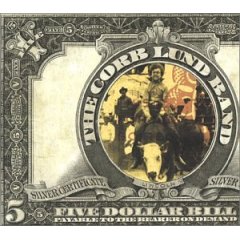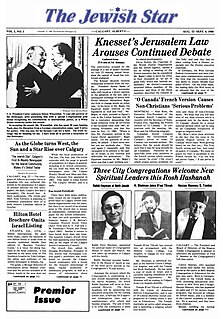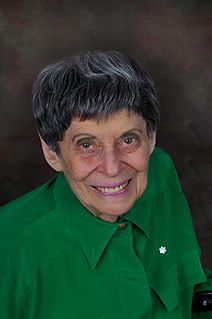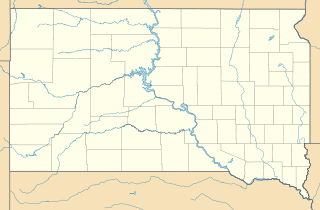
The Alberta general election of 1944 was the tenth general election for the Province of Alberta, Canada. The Assembly was dissolved on July 8, 1944, and the vote was held on August 8, 1944, to elect members of the Legislative Assembly of Alberta.
The Western Standard is a website. From 2004 to 2007 it published a printed magazine.

The Calgary Sun is a daily newspaper published in Calgary, Alberta, Canada. It is owned by Postmedia.

Alberta separatism is a movement that advocates the secession of the province of Alberta from Canada either by forming an independent nation, by creating a new union with one or more of Canada's western provinces, or by joining the United States.
Silas Alexander Ramsay was a Canadian politician and merchant in Alberta, Canada. He served as the 14th mayor of Calgary.
Wainwright was a provincial electoral district in Alberta, Canada that existed from 1913 to 2004. The district was mandated to return a single member to the Legislative Assembly of Alberta.
The Liberal Party of Canada fielded a full slate of 295 candidates in the 1993 Canadian federal election, and won 177 seats to form a majority government. Many of the party's candidates have their own biography pages; information about others may be found here.

Francis "Frank" Oliver was a Canadian federal minister, politician and journalist from old Northwest Territories, and later Alberta, Canada. As Minister of the Interior, Oliver was responsible for Canadian policy to take away lands from First Nations, and changed immigration policies to ban the immigration of blacks to Canada.

Five Dollar Bill is the third album by Canadian country artist Corb Lund, and the first on which his backing band was credited as The Hurtin' Albertans. It was also Lund's first album to be certified gold for sales of 50,000 copies in Canada. It won the "Outstanding Album (Independent)" at the 2003 Western Canadian Music Awards. It was also ranked the #1 album of 2002 by The Gauntlet, the student newspaper of the University of Calgary.
Alexandria is a former Alberta provincial electoral district.

Rachel Anne Notley is a Canadian politician who served as the 17th Premier of Alberta from 2015 to 2019. She is a member of the Legislative Assembly of Alberta for Edmonton-Strathcona, and leader of the Alberta New Democratic Party. The daughter of former Alberta NDP leader Grant Notley, she was a lawyer before entering politics; she focused on labour law, with a specialty in workers' compensation advocacy and workplace health and safety issues.

Alex Simeon Janvier, AOE is an Aboriginal artist in Canada. As a member of the commonly referred to "Indian Group of Seven", Janvier is a pioneer of contemporary Canadian Aboriginal art in Canada.

The Accurate News and Information Act was a statute passed by the Legislative Assembly of Alberta, Canada, in 1937, at the instigation of William Aberhart's Social Credit government. It would have required newspapers to print "clarifications" of stories that a committee of Social Credit legislators deemed inaccurate, and to reveal their sources on demand.
David B. Williams is a noted Canadian Ojibway aboriginal artist.

The Jewish Star was a newspaper which appeared in two editions, both produced in Calgary, Alberta, from 1980 to 1990. The fortnightly Calgary edition of The Jewish Star was the first independent Jewish newspaper published in that city; the monthly Edmonton edition of The Jewish Star was the first independent Jewish newspaper published for the provincial capital. Both editions were tabloid-sized newspapers mailed on a controlled circulation basis to virtually all Jewish households in each city.

Lo Stivale: Periodico d’informazione, Cultura e Sport per gli italiani dell’Alberta was an Italian newspaper published in Alberta.

Calgary Jewish News, the first community-run newspaper of the Jewish community of Calgary, Alberta, was published from September 1962 to 1988.
Gladys Taylor, née Tall was a Canadian writer and publisher.

Martha Ruth Cohen, CM, LLD was a Canadian community activist and philanthropist. She spearheaded a variety of major civic projects, including construction of the $45 million Calgary Centre for the Performing Arts. As chairwoman of the Board of Directors at Mount Royal College, she oversaw the construction of a new campus and was the first woman to head a higher educational institution in Alberta. She was a member of the Order of Canada and received an honorary doctorate from the University of Calgary in 1982.
The Canadian Western Jewish Times, established in 1914, was the first Jewish newspaper published in English in Western Canada and the earliest attempt to produce a Western Canadian regional Jewish newspaper in English. Like many other efforts to publish Jewish newspapers in Canada between 1891 and the first decades of the 20th Century, it proved to be ephemeral.













